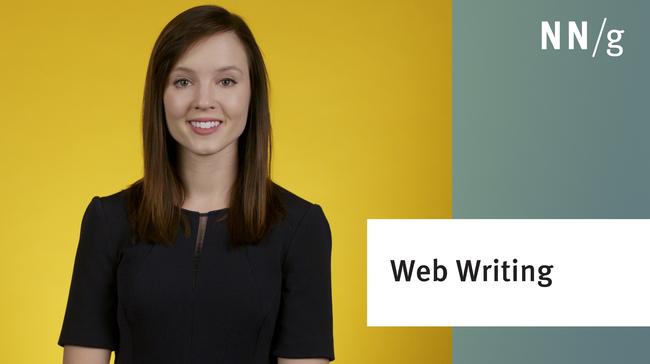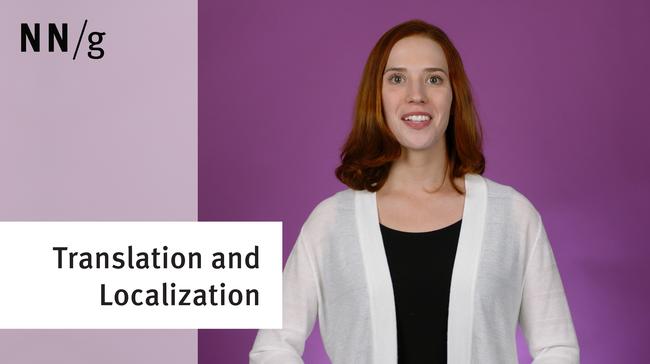The introductory paragraph(s) found at the top of many Web pages is what I call blah-blah text: a block of words that users typically skip when they arrive at a page. Instead, their eyes go directly to more actionable content, such as product features, bulleted lists, or hypertext links.
The worst kind of blah-blah has no function; it's pure filler — platitudes, such as "Welcome to our site, we hope you will find our new and improved design helpful."
Kill the welcome mat and cut to the chase.
People read very little on Web pages. Don't waste word count on generic, feel-good material. It's not going to make customers feel good anyway. They care only about getting their problems solved as quickly as possible so they can leave your site.
Mea Culpa
It's easy to tell Web writers to cut the fluff. It's harder to actually do it. Each time a new content contributor joins your team, you must drill them incessantly on the special guidelines for writing for the Web. The guidelines seem obvious, but it takes a lot of skill to design good verbiage.
That's why I repeatedly stress the rules for content usability, and why I include targeted writing courses at all my conferences. (As far as I know, our event is the only usability or Web design conference with this level of commitment to writing. I always teach content usability because the actual information is the Web design component with the highest impact on website profitability.)
Despite my constant emphasis on the importance of the writing guidelines, I fall into the bloated blah-blah trap myself. It's been 10 years and numerous lectures since I developed the guidelines in 1997, but I still make content usability mistakes. That shows just how hard it is, and why you need to continuously check your copy for usability compliance.
As an example, we recently posted a series of interviews with participants in the UX Conference. In my original design, the page featuring these interviews started with the following blah-blah text:
The conference attracts a highly diverse audience of professionals who are committed to advancing user experience in their companies. Hearing from participants at previous conferences will give you an idea of the colleagues you'll meet and the discussions you'll have when you attend.
At least I had the smarts to highlight keywords. Still, this is too much text, and most users are guaranteed to skip a full paragraph like that, particularly when it sits above a list of enticingly blue links that are begging to be clicked.
Just before posting the page, I remembered my own advice to cut the text in half for online readers. I removed the first sentence, reducing the intro paragraph from 43 words to 24. (Admittedly, this was only a 44% reduction in word count; I should have cut deeper.)
Why Retain Any Introductory Text?
Ruthlessly editing introductory paragraphs might be good advice, but why not just kill them off completely? Cutting word count seems a weasely approach.
Intro text has a valid role in that it helps set the context for content and thus answer the question: What's the page about?
In my example, simply showing visitors a list of 7 completely different interviews might be confusing. Why are these 7 articles in one section on a single page? Two lines of intro, and users know what the interviews have in common (they profile UX Conference participants) and what they'll gain by reading them (they'll get an idea of the conference's off-program aspects, which are often the most important, but — by definition — are hard to convey through the program description).
Intro text serves the same purpose for an interior page as the homepage does for the entire site and the tagline does for the homepage itself. For all three scenarios, people need to know what they are getting into before they dive in.
Of course, many users do dive straight into deep waters without the benefit of an intro:
- Visitors from search engines or other sites follow deep links, parachuting into the site and landing directly on an interior page, thus bypassing the homepage. But they'll often visit the homepage as their second or third step, when they want to know what else the site has to offer.
- People arriving at a specific page often skip the blah-blah, even when it's laudably concise. But, if they're confused about the page or want to know more about it, they'll typically turn to the top of the page and scan the intro and/or the tagline. If the intro's short and scannable, they'll benefit from its situating perspective.
A brief introduction can help users better understand the rest of the page. Even if they skip it initially, they might return later if it doesn't look intimidatingly long and dense. If you keep it short, a bit of blah might actually work. So, prune your initial draft of marketese and focus on answering two questions:
- What? (What will users find on this page — i.e., what's its function?)
- Why? (Why should they care — i.e., what's in it for them?)





Share this article: